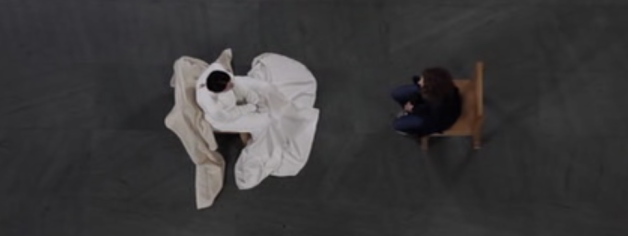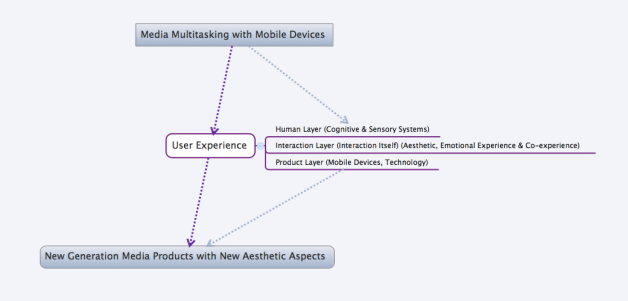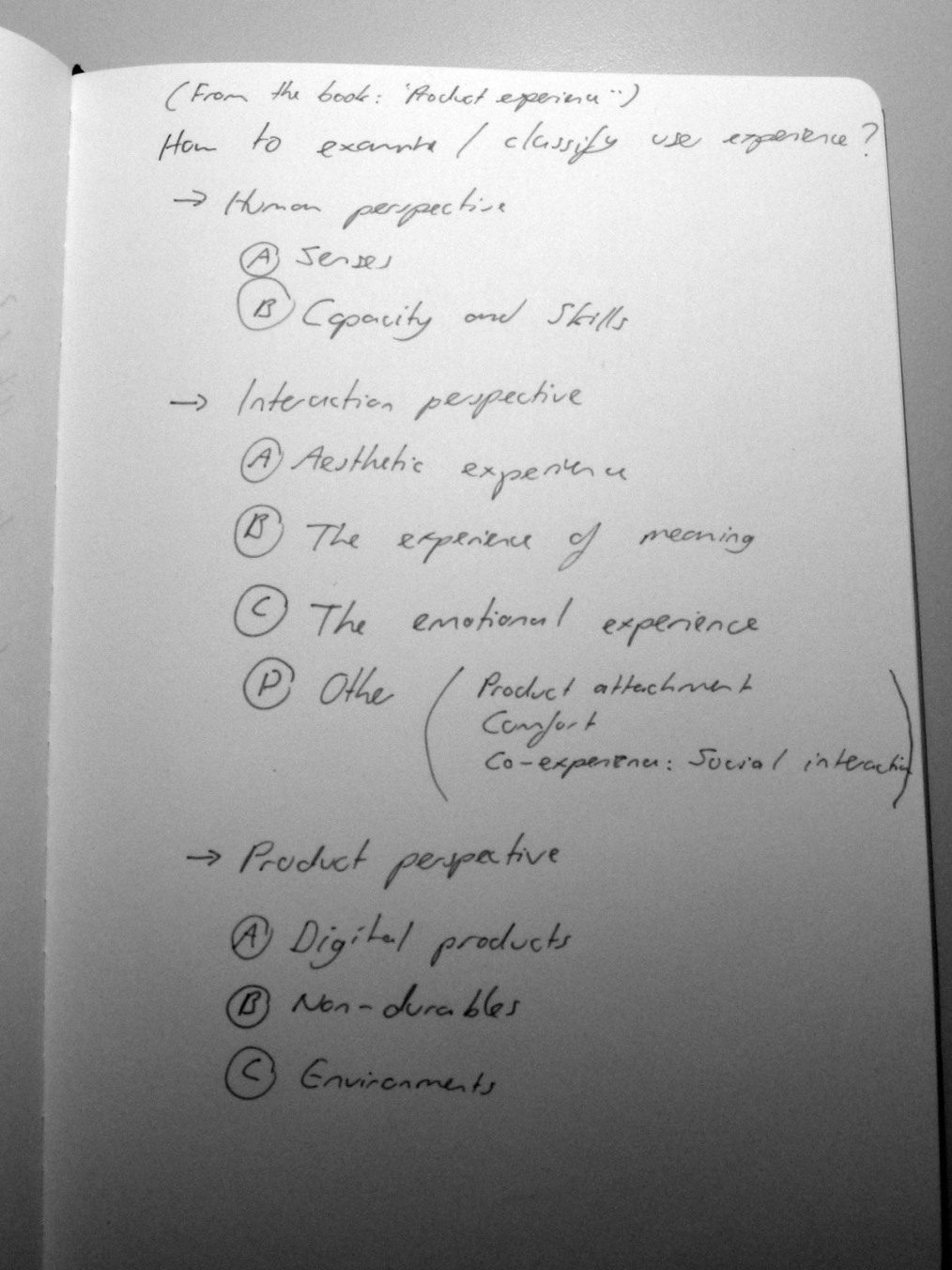INTRODUCTION
With the introduction, and than popularization of mobile digital products such as smartphones, laptops, tablets, the routes through which cultural products are accessed and consumed are altered immensely. All these devices have the technological potential for changing the practices of everyday lives. From the beginning of the day till the end, our experiences in reality are enriched, extended, cut, interfered by these digital technologies. As a direct result of these mobile computing devices, media multitasking has become the regular way of viewing and interacting with several media forms. This behavior, involving simultaneous or sequential engagement with media products, is a distinct mode of usage that needs special consideration in understanding the perception, evaluation and recreation of cultural goods.
This article argues that media multitasking, a behavior significantly has risen parallel with mobile device usage, has become a factor in changing todays cultural scene, furthermore creating a culture on its own by promoting the consumption and production of condensed media forms. For explaining this impact of multitasking on culture industry; briefly media multitasking behavior is going to be analyzed, examples of condensed media forms are going to be examined within multitasking framework, lastly the “glance culture” an outcome of this behavior is going to be introduced and discussed.
BODY
Media multitasking is sequential or simultaneous interactions with several media contents within one device or among separate digital products. Technological capabilities, mobility and connectivity of mobile computing devices are the key concepts behind increasing media multitasking behavior as well as the cultural changes brought by it. Users are presented a vast variety of technological applications from which they can choose suitable software for themselves, run multiple programs simultaneously, switch from one application to another smoothly. Their capabilities are extended as their channels are multiplied. For instance leisure and work applications can run together within all these versatile computing devices. Listening to music or watching videos can be accompanied with preparing documents for work or sending e-mails to a colleague. Portability of personal mobile devices supports spontaneous actions of the users as well. Taking pictures, shooting videos, sharing thoughts by phone or teleconference calls, taking notes on specific occasions, writing reminders, searching information related to the a context, getting assistance on problems such as navigation are among the functions that now have become a part of our daily routines. Especially online access introduces all these uses a different level by introducing instant connection and expanded sharing options. Users are wired to a digital reality 24/7 and they are present in a virtual world in which they are part of social networks, and can reach unlimited sources of information anytime anywhere. With the availability of mobile computing devices, increased hypermedia consumption became an inevitable consequence. Switching between different contents is triggered, promoted, became a necessity and lastly habit for users.
There are mainly two modes for media multitasking. The situations in which contents of all media sources are supporting one another can be considered to be a complementary use. For instance, making online search for relevant information while studying is an example for this mode. However, more frequently what is involved in media multitasking is consuming completely different sources of media one at the same time. An everyday scenario for passing from one media to another might be exemplified as follow: You begin to watch a movie on TV, your phone rings, you answer the call or leave a text message, than you resume watching the movie, you get bored and begin playing a game on your phone, than a question pops in your mind raised by any content in the movie, you search for an answer to it on your phone or laptop, continue browsing, check out your Facebook page meanwhile and in the end forget about what you are watching in the end. This scenario gives a number of hints regarding the dilemmas emerge by media multitasking. Firstly, the user seems to be in control when s/he is simultaneously consuming diverse media products. However, spontaneous actions occurring within a continuous period of time turns out to fragment this control and even convert it into a chaotic process. Secondly, doing different tasks concurrently mathematically results in saved time, yet these concurrent tasks usually do not complement each other and result in interfering one another. This even causes a lost time instead of creating extra minutes. Also, with these devices are on, users are filling little moments by micro actions, however the sum of these actions never results in a memorable quality time. Most of these moments turn to out be temporary. It is notable that within a cultural environment of audio-visual bombardment, users are creating their personal spaces that adds-on to this effect. The end result is an intense consumption pattern with extra cognitive load to users. Concentrating on a single task is becoming harder, with intentional self-distractions. It is problematic to limit oneself, set boundaries within the unlimited world of Internet. Interfaces and mobile products are becoming more user friendly, enhancing users capabilities. However usability is not the only criteria for cultural improvement. It is possible that multitasking is one of the causes for diminishing the aesthetic qualities of cultural products.
The core of media multitasking is interference, causing users volunteer distraction from the content of media. As a reaction to this behavior, cultural industry is struggling to hook the audience. Producing “catchy” goods is the main goal for cultural industry. The new currency for media products is catching the attention of the viewers. This article suggests that there are two strategies cultural industries have developed within multitasking environment in order to grab the attention of customers: Creating short forms of media products that can be adjusted to simultaneous media usage and complex products that prevents multitasking by requiring full attention of users. In other words, a number of new media products aim to engage the viewers either by offering contents that are simple and compressed, or they intend to keep the attention still by building intense, powerful, deep relations. Condensed media forms correspond to both of these two distinct qualities.
As introduced above, first strategy of cultural industries is adapting to the distracting nature of multitasking. Viral videos, twitter and mini games are becoming popular formats of media. In these formats, content is as simple as it can get. Fast-forwarding, stopping, resuming, missing certain parts of these media products does not matter in means of evaluating the content. The flying birds hitting the pigs, the images flow on Facebook walls, the almost pornographic music videos with only hips and lips, the redundant make up and eclectic costumes of Lady Gaga, the continuously flashing ads running on billboards, TVs and Internet sites… All of these examples are weak in content, do not require high levels of attention and do not have aesthetic concerns such as creating Gestalt or harmony. Their visual language is that of pluralism. It is arguable that these media products do not create quality time. Instead they fill in the micro-moments. However, these micro-moments turn out to be creating habits to relax minds. These almost null experiences occupy big portions of lives by becoming a part of daily routines. Their popularity makes them easily accepted by members of society and set them as a cultural norm. All of these media forms share the same concern: Pulling the glance over them. The problem is that this glance, this flirt with the potential customer, is evolving to result in a life long empty a gaze. After hooked by an image or sound without a deep content, viewers might become the hunters for more of those hooks to keep them busy, just for killing time. Cultural industry is supporting popularization of this category by creating screen-based compact forms of media: Creating audio-visual snacks for the viewers has become a valid approach for commercial success.
There is another cultural strategy related to multitasking, which aims to create unique experiences for users in order to support the engagement with certain products. This type of condensed media does not adapt multitasking conditions, but stand as a reaction against it. Creating immerse, deep, meaningful, rich, strong relationships with the viewers is the main goal. For instance, with interactive media forms, the caught attention of viewers can be kept still. Viewers become participants, the content-based interaction turns into unforgettable media experiences. Interactive engagement with an art object brings a higher possibility that intended messages will reach the audiences. This situation can be exemplified by the internet-based interactive short movie “The Carp and The Seagull” directed by Evan Boehm. This movie has a continuous structure composed of 4 chapters and runs on its own. What makes it distinctive is being open to interventions of users. The actions of the user create unique experiences by enriching the narration of the movie. Such interactive products build lasting memories by setting powerful relations with the content. They do not fade away as soon as the attachment lasts. Other than interactive media forms, there are examples captivating audiences by their unique aesthetic qualities. Feature length movie Cloud Atlas is an outstanding example that integrates several genres, stories, time periods and characters around a central theme. The complex, layered structure of this movie combined with the aesthetics of montage is giving a distinct sense of fulfillment to its viewers -as if they have watched a number of movies one at a time. In that sense, it is a novel approach reminiscent of multitasking behavior.
Transmedia products constitute a separate category that merges all qualities of condensed media forms. They are packages of media or products in connection to same synopsis that aim to create an engagement. The way they differ from other condensed media forms is by which bringing together a group of people, or fans around them. Emotional attachment with the characters is the key issue in transmedia products. Harry Potter is a popular and commercially successful example that began its journey as a novel, adapted into movie series, interactive and board games. The admirers of this character desire to own the whole collection of these items. This desire turns out to be an addictive consumption experience. Whether you are a fanatic of this character or not, you are a potential customer surrounded with the images of this popular character. This strategy fits the multi screen visual environment in that sense.
So far, this paper has linked mobile devices with multitasking behavior and analyzed specific media products within this framework. Now, all these findings will be discussed within a broader perspective, as they are argued to be creating a “glance culture”. What is glance? And what does a glance culture refers to? To begin with glance, it is the rapid movement of the eye towards an object in order to evaluate the general aspects of it. Thus, it is a form of quick reading, a look in a hurry for deciding on whether to spend more time on an item or not. What is crucial for a glance is that it is triggered by a signal that attracts the attention over and lasts only for a moment or few seconds. After a brief judgment, the eye and the mind of the viewer move over to another item or stay for further investigation. It is fast in nature and involves stages of attraction, connection, evaluation, and most probably separation, all lasting in seconds. This behavior fits with media multitasking phenomena. The split focus passing from one screen to another, from one window to another, from one media form to another is only possible through glance. As Bolter and Grusin argue, “the viewer experiences hypermedia not through an extended and unified gaze, but through directing attention here and there in brief moments. The experience is one of the glance rather than the gaze.”[1] Here, it will be argued that glance does not only refer to a specific behavior of the eye. Rather, it means a specific attitude towards an object and this results in a glance culture.
Within time constraints and constant media exposure, users are freely choosing among diverse options of media forms, saving their energies by directing their attentions briefly only to haunting media objects. This momentary notice to appealing media forms causes the viewers miss distinct qualities of media products, prevent engagement with their contents, consume them in a hurry, without assigning any value. This attitude presents a one sided consumption pattern, users being the only authority in choosing, evaluating and allocating value to certain media products. The circumstances in which cultural products are consumed might be completely different from that of expected patterns. For instance feature length movies are forms of narration that are supposed to be watched continuously from beginning until the end. They are shot and edited meticulously for this purpose, yet the concerns of the director might never reach the audience regarding the conditions in which they are watched. Missing one minute of a shot may evaporate the whole effort put in a movie. So, significant features of an art object planned during production might disappear during its consumption. Multitasking tends to cause such ruptures and create a gap between intended concerns and obtained outcomes.
Another aspect of glance culture is that short, condensed media forms are popularized for commercial purposes. This transforms the aesthetic taste of societies accordingly. Just as creating an obese generation by supporting fast food chains, industrial approach generates societies that consume audio-visual snacks and get hungrier in return. The aesthetic qualities are only considered to create a haunting effect. The aesthetic pleasure users get from media products is replaced with pleasures arising from the amount of consumption. In other words media multitasking is a form of fast consuming that guarantees the increased need for consuming more. Users are unsatisfied with the current media products cognitively and emotionally, however this leads to increased need for searching satisfaction with alike products. There is an ongoing rise in seeking for more different, interesting, dazzling, striking media forms.
Within the glance culture the number of clicks, shares and “like”s determines the value of media products since they are read as signs indicating if a particular media item is worth a glance or not. If the content is more direct and obvious, its chance of being perceived and being expanded across Internet increases regardless of its aesthetic qualities.
.
.
CONCLUSION
Media multitasking is a behavior leading to a glance culture in which users split their attentions between several eye-catching condensed media forms. Time is limited; media sources are infinite, yet users are the starving to consume more. The users are authority figures central to this culture. They can choose among diverse media options, can fragment the produced content by intervening the media object and assign value to media products by simply paying attention or not.
Within this multitasking culture, two types of condensed media forms stand out. Firstly, simple and short forms such as tweets, viral videos or mini games are becoming more popular among users of mobile computing devices. Secondly, concentrated, dense media forms creating unique aesthetic experiences are rising due to preventing users’ simultaneous media use. Lastly, transmedia products merge both qualities of condensed media and create emotionally attached customers. The common characteristic of all these media products is absorbing the distracted attention of multitaskers.
As discussed above, media multitasking is becoming a common consumption behavior in the digital age that has begun transforming cultural industries and the aesthetic aspects of cultural products. Media multitasking can be considered both as an obstacle and an opportunity for motivating the creation of innovative media products. The question is which condensed media forms are going to be supported by cultural industries in the future? The reasons behind current choice of specific media products during media multitasking need further investigation. Future studies might be useful concerning the fact that this behavior is likely to rise in the future.











